Watercolor Pencils vs. Colored Pencils - An In-Depth Comparison
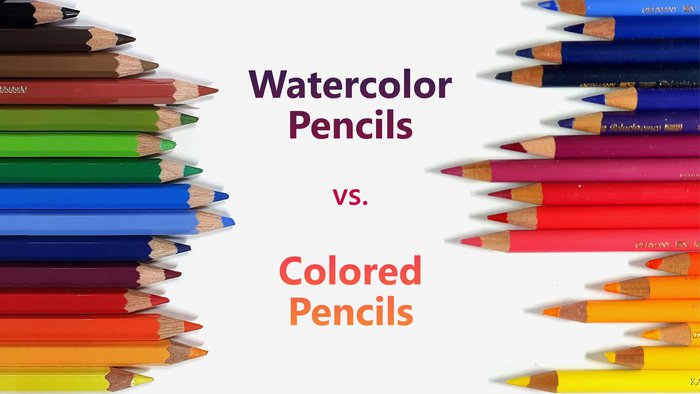
In the vibrant world of artistic mediums, colored pencils and watercolor pencils both hold a unique and important place.
While seemingly similar, they offer distinct characteristics that can greatly influence the creation process and the final result of your artwork.
In this guide, I'll dissect the intricacies of these two mediums, enabling you to make an informed decision on which suits your artistic needs best.
Besides watercolor pencils and regular colored pencils, there are more types. Here's an in-depth article listing all of the different types and their differences.
Overview of Colored Pencils

Delving deeper into our artistic exploration, let's start by looking at the more traditional of the two mediums: colored pencils.
Colored pencils are drawing instruments made of a pigment core encased in wood or plastic. The core composition depends on the binder used, which can either be wax or oil-based, affecting the pencil's performance and handling.
Core Characteristics of Colored Pencils
1. Wax-based vs. Oil-based Colored Pencils
Wax-based colored pencils are known for their soft, creamy texture. They lay down color and blend very smoothly but are prone to a phenomenon called "wax bloom", where a white-ish film appears on the artwork's surface over time.
Oil-based colored pencils, in contrast, are harder and have a less creamy texture. They offer a higher degree of precision but might require more pressure to lay down intense color. They are less prone to wax bloom.
I've written an article specially dedicated to the differences between wax-based and oil-based colored pencils, so check that out if you're interested.
2. Pigment Quality and Intensity
The pigment quality in colored pencils varies widely. Artist-grade pencils have higher pigment loads, leading to more vibrant and intense colors. Student-grade pencils, while more affordable, often have lower pigment quality and might not be as vibrant or lightfast.
3. Blending and Layering Capabilities
Colored pencils excel in blending and layering, allowing artists to create a wide array of hues and tones. By varying the pressure, you can adjust the intensity of the color, making colored pencils a great tool for detailed and nuanced artwork.
Advantages of Colored Pencils
1. Precision and Control
One of the main advantages of colored pencils is the control they offer. Their point allows for fine detailing and precision, making them ideal for intricate designs and realistic drawings.
2. Ease of Use
Colored pencils are straightforward to use, making them a great medium for beginners. There's no need for any additional materials or preparations - you can simply start drawing.
Limitations of Colored Pencils
1. Difficulty Achieving a Watercolor-like Effect
While you can achieve beautiful blending with colored pencils, they lack the fluidity and translucency of watercolors. Creating a watercolor effect is challenging and time-consuming with colored pencils.
2. Limited Coverage and Transparency
Covering large areas can be more laborious with colored pencils. Moreover, due to their opaque nature, they don't offer the level of transparency possible with watercolor pencils or other water-based mediums.
Overview of Watercolor Pencils
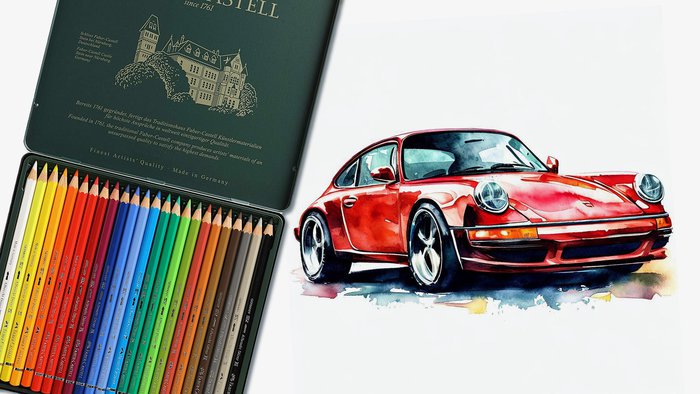
Let's move on to another versatile and fascinating art medium - watercolor pencils. They offer the precision of colored pencils with the added ability to create watercolor-like effects.
Watercolor pencils, also known as aquarelle pencils, look nearly identical to regular colored pencils. However, their core is made with water-soluble binders, allowing the pigment to dissolve and blend when water is applied, mimicking the effect of watercolor paints.
Core Characteristics
1. Water-Soluble Pigments
The primary characteristic that sets watercolor pencils apart is their water-soluble pigment. When dry, they perform much like colored pencils. But when you add water, they transform, creating a unique, watercolor-like effect.
2. Intensity and Transparency
With watercolor pencils, you can easily control the color's intensity and transparency. Dry applications offer vibrant and opaque colors, while adding water allows you to achieve softer, transparent washes of color.
3. Blending and Layering Capabilities
Just like colored pencils, watercolor pencils can be layered and blended. But their water-solubility adds another level of versatility - when water is added, you can blend colors together seamlessly, creating smooth transitions and gradients.
Advantages of Watercolor Pencils
1. Versatility and Flexibility
Watercolor pencils are incredibly versatile. You can use them dry for detailed work or add water to create beautiful watercolor effects. This allows for a wide range of artistic expressions within a single medium.
2. Achieving Watercolor Effects
The ability to easily achieve watercolor effects is a significant advantage. You can enjoy the control and precision of a pencil and the beautiful spread and blend of watercolors.
3. Suitable for Mixed Media Artwork
Because of their unique properties, watercolor pencils can be an excellent choice for mixed media artwork. They can be used alongside watercolor paints, regular colored pencils, ink, and much more, opening up a world of creative possibilities.
Limitations of Watercolor Pencils
1. Requires Additional Tools (Water and Brush)
Unlike regular colored pencils, watercolor pencils require water and a brush to unlock their full potential. This can make them a bit less portable and convenient.
2. Longer Drying Time
Due to their water-based nature, artwork created with watercolor pencils will require drying time. This may slow down the artistic process, especially for those who prefer to work quickly.
3. Less Precision Compared to Colored Pencils
While watercolor pencils offer a good deal of control, they are not quite as precise as regular colored pencils once water is added, as the pigment tends to spread and diffuse.
Now that we have explored the fundamentals of both colored pencils and watercolor pencils, let's dive into a comparison of these two unique mediums.
Comparison between Colored Pencils and Watercolor Pencils

With a good understanding of colored pencils and watercolor pencils individually, we now compare them head-to-head. This comparison will give you a clearer idea of their individual strengths and how they can best be utilized in your artwork.
1. Pigment Properties and Effects
Color Intensity and Vibrancy
Both mediums offer vibrant colors, especially when you use artist-grade pencils.
However, colored pencils generally provide more consistent intensity, while watercolor pencils offer a range of intensity levels based on the amount of water used.
Transparency and Layering Capabilities
While both can be layered, colored pencils typically offer more opaque layers.
In contrast, watercolor pencils can create transparent washes of color, particularly when water is applied, allowing the color beneath to show through.
Achieving Different Textures and Effects
Colored pencils excel in creating detailed textures and smooth gradients, perfect for intricate designs and realism.
Watercolor pencils, on the other hand, lend themselves to fluid, painterly effects and broad washes of color, capturing the expressive qualities of watercolors.
2. Ease of Corrections
Colored pencils, depending on the paper used and the pressure applied, can often be erased or lightened to some degree using an eraser, allowing for corrections.
When used dry, watercolor pencils can also be slightly corrected. However, once water is applied, the pigment is generally permanent and cannot be completely removed.
3. Application Techniques and Versatility
Drawing and Coloring Techniques with Colored Pencils
Colored pencils are fantastic for traditional drawing and coloring techniques, including hatching, cross-hatching, stippling, and burnishing. They offer excellent precision, making them perfect for detailed work.
Watercolor Techniques with Watercolor Pencils
Watercolor pencils open up a world of watercolor techniques, including wet-on-dry, wet-on-wet, and color lifting. They can be used to create smooth washes of color, gradients, and soft blends.
Blending and Shading Capabilities
Both mediums excel at blending and shading, though the process differs. Colored pencils are typically blended by layering colors, while watercolor pencils can be blended both dry and with water.
4. Skill Level Required
Colored pencils are often seen as a beginner-friendly medium due to their similarity to ordinary pencils. However, mastering advanced blending and shading techniques can require practice.
Watercolor pencils can have a steeper learning curve due to the added complexity of water control. Mastering their unique properties can be challenging but also immensely rewarding.
5. Differences in Tools and Materials
Additional Supplies Required for Watercolor Pencils
Watercolor pencils require additional tools like water and a brush. This adds to the complexity but also to the versatility of the medium.
Surface Compatibility (Paper Types)
Both mediums work best on high-quality, heavyweight paper. However, watercolor pencils typically require watercolor paper, which can withstand the addition of water without warping or pilling.
Durability and Lightfastness of Pigments
Artist-grade pencils of both types generally offer excellent lightfastness. However, as with any artwork, pieces created with these mediums should be stored properly to prevent fading and discoloration.
6. Artistic Styles and Preferences
Realistic and Detailed Illustrations with Colored Pencils
Colored pencils are ideal for creating highly realistic and detailed illustrations due to their precision and the control they offer.
Expressive and Fluid Artworks with Watercolor Pencils
If you prefer more expressive, painterly effects, watercolor pencils are an excellent choice. They can create fluid, wash-like effects similar to watercolor paints.
Mixing and Combining Both Mediums
Both mediums can also be combined to leverage the benefits of each. This is especially useful for mixed-media artists seeking to incorporate a variety of textures and effects in their work.
Choosing Colored Pencils or Watercolor Pencils for Your Artwork
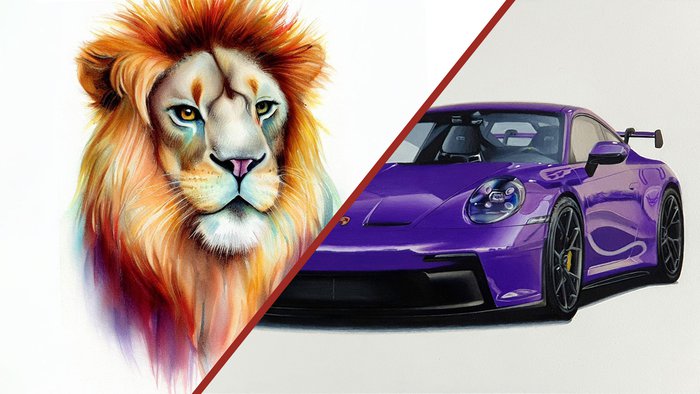
Now that we've compared colored pencils and watercolor pencils, the next step is to determine which medium is right for your artwork. Several factors can influence this decision, from the desired effect to your personal preferences and comfort level.
1. Considerations Based on the Desired Effect
Vibrant and Precise Illustrations
If your goal is to create vibrant, detailed, and precise illustrations, colored pencils may be the better choice. Their ability to hold a sharp point allows for fine detailing and controlled shading.
Soft and Blended Color Transitions
For soft and blended color transitions or wash-like effects, watercolor pencils would be the ideal choice. The addition of water can create beautiful gradients and blends that mimic the look of watercolor paints.
Watercolor-like Effects and Textures
If you're seeking to create watercolor-like effects and textures with the control and precision of a pencil, watercolor pencils are undoubtedly the way to go.
2. Considerations Based on Personal Preferences
Preferred Application Techniques
Your preferred drawing or painting techniques can also influence your choice. If you enjoy using water and brushes to blend and transition colors, watercolor pencils will offer you this flexibility. If you prefer dry techniques and direct application, colored pencils might be a better fit.
Level of Control and Precision
Artists who enjoy a high level of control and precision might lean towards colored pencils, while those who prefer a more fluid, expressive medium might enjoy watercolor pencils more.
Preferred Portability and Convenience
Colored pencils are more portable and convenient as they don't require additional tools. If you often sketch on the go, this could be an important factor to consider.
3. Experimentation and Finding Your Preferred Medium
Ultimately, the best way to choose your medium is to experiment with both. Try different techniques and effects with each and see which one you enjoy the most. There's no definitive "better" medium - it all comes down to what works best for you and your art.
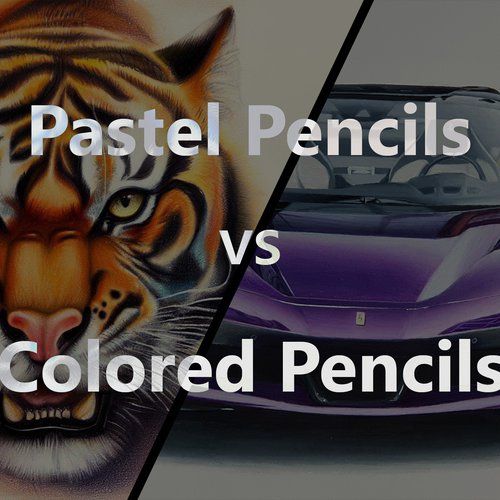
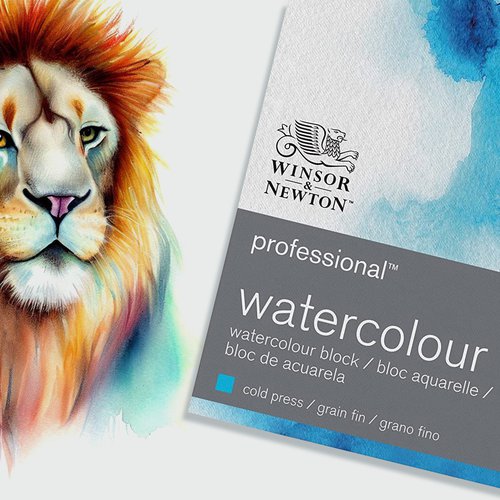
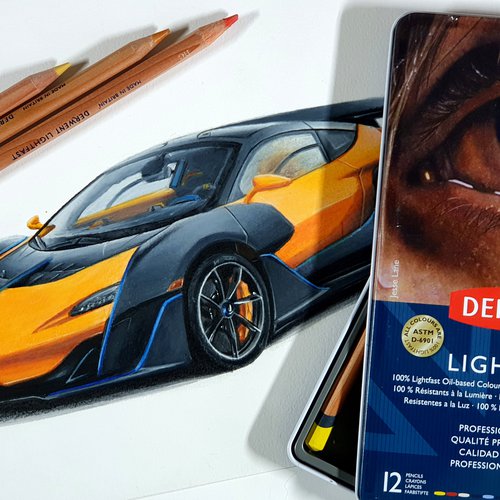


Be the first to comment!
Comments
There are no comments yet.